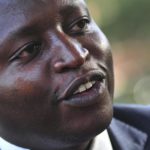By Miriam Katunze and Brian Sserunjogi
Globally, social protection is recognized as critical for sustained poverty reduction and inclusive growth. The extent of coverage of a country’s pension system is one of the main indicators of the effectiveness of a nation’s social security system. Coverage is the first indicator of inclusion, since a pension system that is sustainable and adequate but does not cover most of those who are supposed to be protected suffers from a serious policy failure.
Since 2011, the Uganda Retirements Benefits Regulatory Authority has been playing an oversight role in the reform process of the pension sector including the regulation of Public services pension scheme; the National Social Security Fund (NSSF) for private sector employees; and other small private schemes. Despite, the existence of a pension regulator; only 3 percent of the Ugandan population has access to formal social security.
The Public Service Pension Scheme and the NSSF schemes cover only 2.8 percent and 2.3 percent of the working population respectively. However, just how comprehensive is Uganda’s pension sector coverage? A study by the Economic Policy Research Centre (EPRC) highlights the following salient features of the extent of inclusiveness of the pension sector coverage in Uganda.
Coverage by geographical location and gender
There exists regional inequalities in pension coverage in Uganda. Overall, districts in the central and western regions of Uganda possess a higher number of the employed population covered under a retirement benefit scheme than those in the Eastern and Northern regions. The observed trend is partly explained by disparities in regional distribution of employers. Indeed, according to the census of business establishment, the central region accounted for 30 percent of business establishments, followed by the western region (18 percent) while the Northern region had only 8 percent.
In addition, as expected urban residents have a high coverage than rural residents. And while there exists hardly any gender disparity in pension coverage in Uganda, coverage among employed women is slightly lower.
Policy Implications
To improve inclusiveness of pension coverage in the private sector, the NSSF Act needs to be amended to allow contributions from all employers regardless of the number of employees.
- Reforms are required to bring on board new retirement benefit schemes to capture the largely neglected self-employed and informal sector employees through innovative products, which encourage flexible collection methods.
- Increase public awareness about the retirement benefits schemes among the rural population to encourage uptake and inclusiveness.







